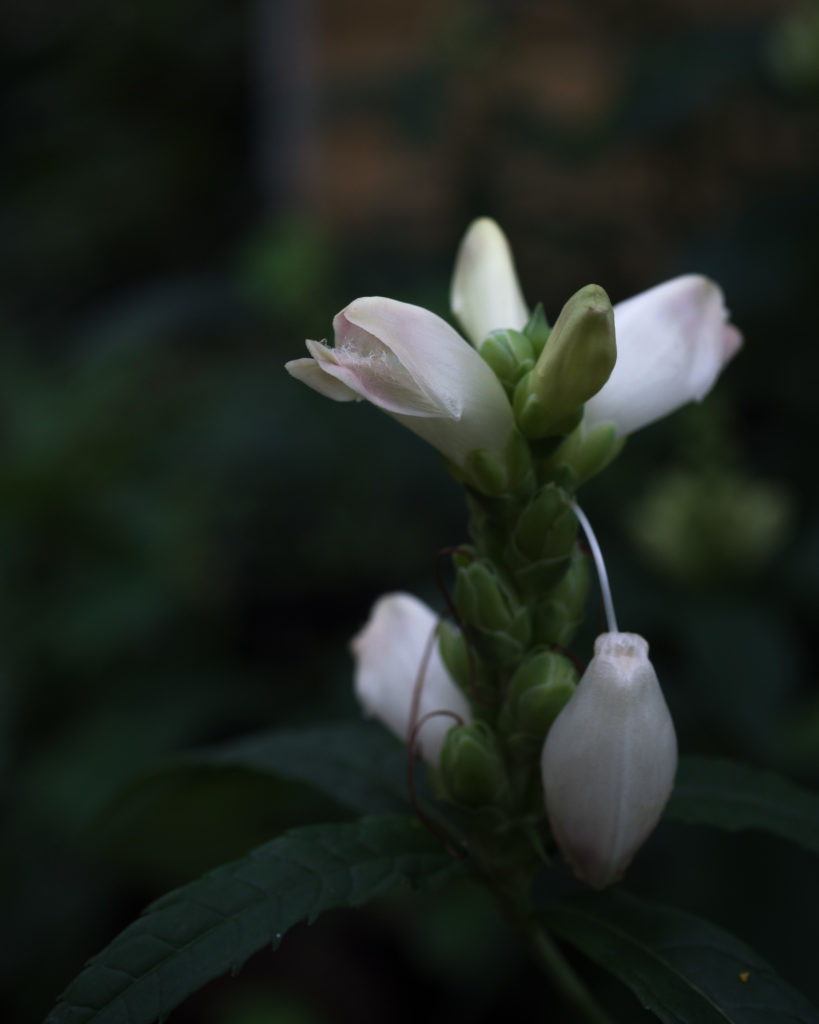Lobelia cardinalis – Cardinal Flower
Stunning, vibrant and sexy. A hands-down favourite for many native plant enthusiasts. The cardinal flower boasts of scarlet red “flower wands” that bloom during the summer months. Butterflies and ruby-throated hummingbirds are frequent visitors to this wildflower species. Prefers moist to wet soil as it naturally occurs in wetland areas.
Height : 2-5 feet (60-180 cm) Spread : 1-2 feet (30-60 cm)
Blooming Period : July to September
Light : Full to Partial Sun
Water : Medium to Wet
Soil : Sand, loam
Zone : 3-9
Native Ontario Habitat : Stream banks, wetlands and low-lying woods
Landscape Uses : Butterfly gardens, pollinator gardens, hummingbird gardens, wet meadows
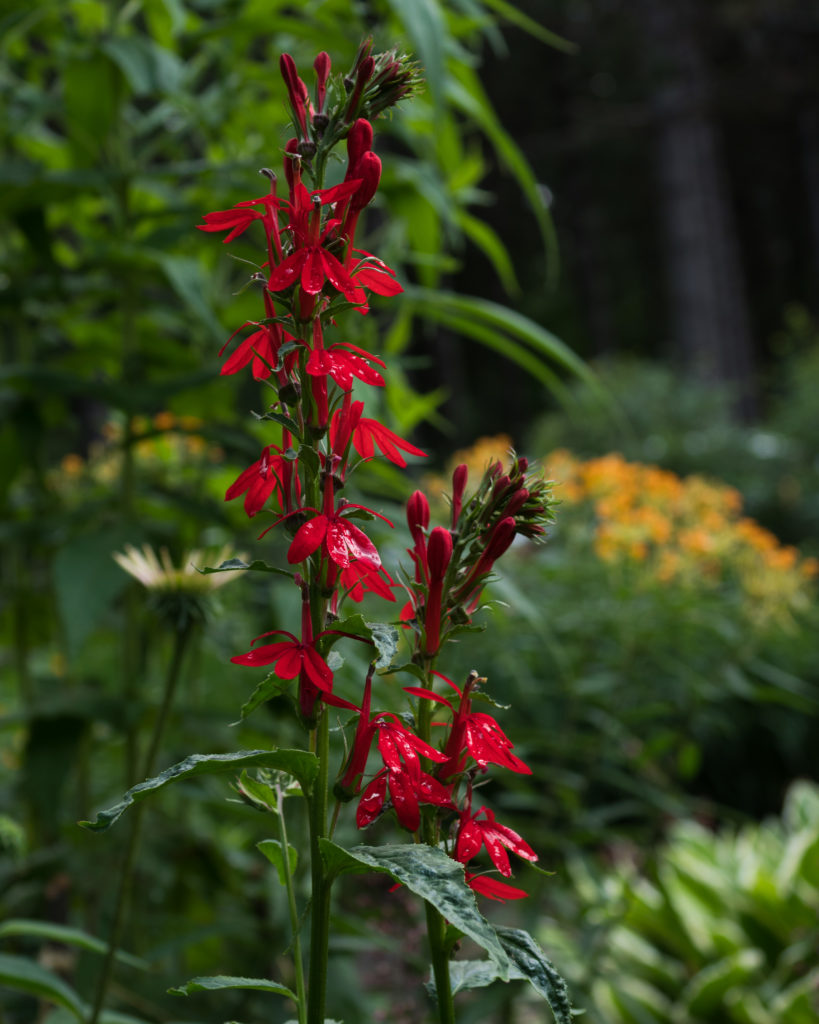
Rudbeckia lacianata – Green-headed Coneflower
Also known as wild golden glow. A tall woodland species that enjoys moist soils. Displays cheery, yellow blooms from summer into the fall. This rhizomatus-spreading perennial can become aggressive when in preferable growing conditions.
Height : 5-7 feet (150-210cm)
Spread : 1-3 feet (30-90 cm)
Blooming Period : July to October
Light : Full sun to shade
Water : Medium to moist
Soil : Sand, loam, clay
Zone : 3-8
Native Ontario Habitat : Woodlands

Verbena hastata – Blue Vervain
Landscape Uses : Butterfly gardens, pollinator gardens, woodland plantings, shade gardens and naturalized areas
The blue vervain is a beautiful native perennial with long, spear-shaped purple flowers. This vervain species prefers moist to wet soil and is commonly found around streams and near wetlands. Attractive to many native bees.
Height : 2-6 feet (60-180cm) Spread : 1-2 feet (30-60 cm)
Blooming Period : July to September
Light : Full sun
Water : Medium to Wet
Soil : Sand, loam, clay
Zone : 3-8
Native Ontario Habitat : Wet meadows, stream banks and fields
Landscape Uses : Pollinator gardens, stream landscapes, rain gardens and naturalized areas
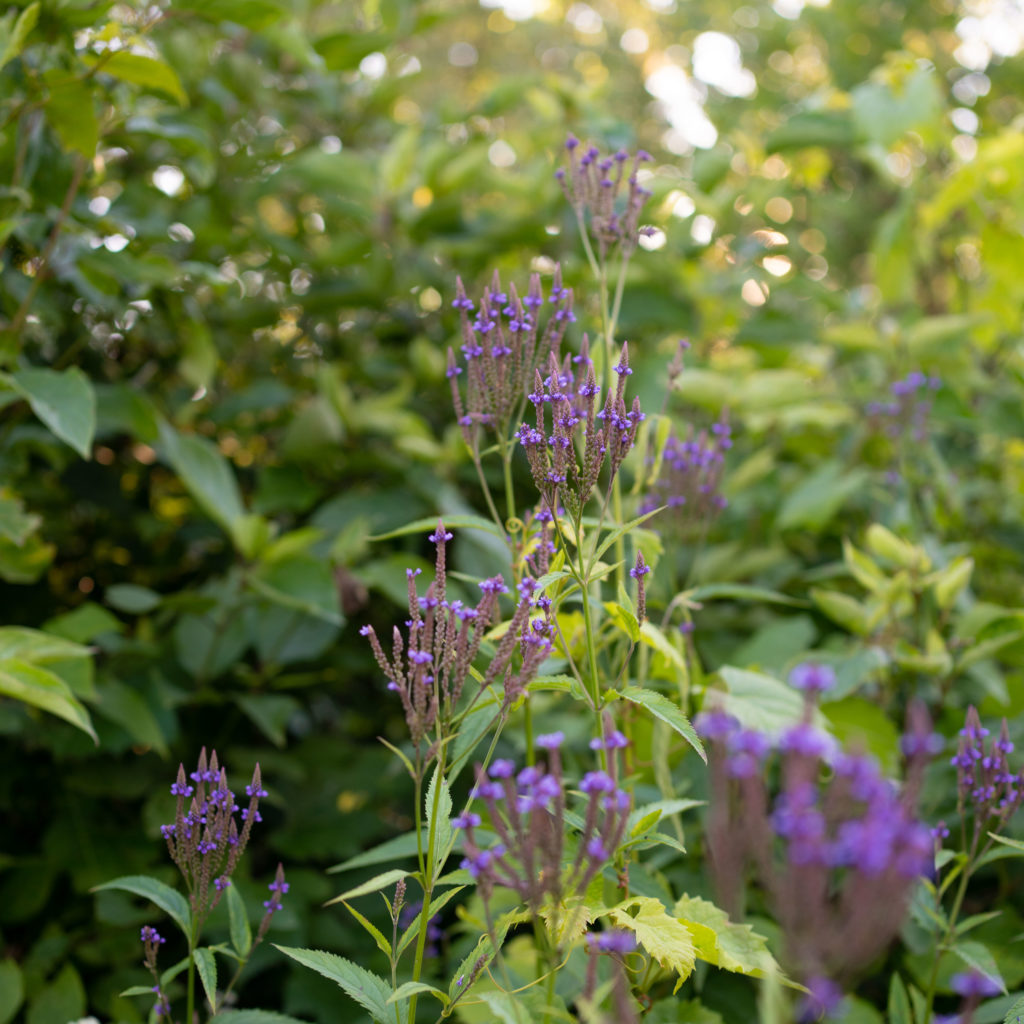
Vernonia missurica – Missouri Ironweed
Know as the most “attractive” ironweed, this species boasts of bright, magenta flowers with a large profile. Enjoys wet to moist soil with the ability to handle periodic flooding but will also thrive in an average garden soil. The Missouri ironweed gets its name from the tough, robust stems and rusty coloration of its seeds. The composite flowers are highly attractive to various butterfly and pollinator species
Height : 3-5 feet (90-150 cm) Spread : 2-4 feet (60-120 cm)
Blooming Period : July to August
Light : Full Sun
Water : Medium to Wet
Soil : Sand, loam, clay
Zone : 4-8
Native Habitat : Fields, wet meadows, stream banks and wooded swamps
Landscape Uses: Butterfly gardens, pollinator gardens, wet meadows, stream bank restoration and naturalized areas
Notes: A North American native considered a naturalized species in Ontario
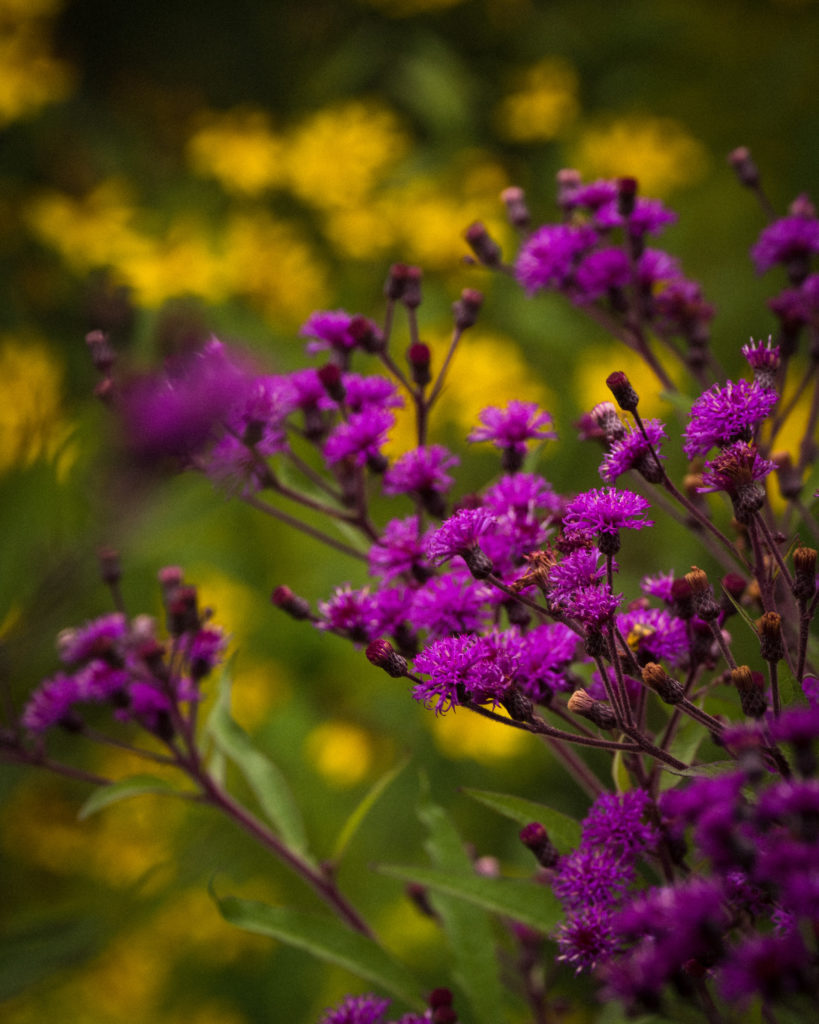
Eupatorium maculatum – Joe Pye Weed
Butterflies absolutely love the Joe Pye Weed! The huge clusters of bright pink flowers are buzzing with pollinators from August into September. A tall, native Ontario perennial that thrives in moist to average soil with full sun. The seed heads persist into winter and provide aesthetic interest.
Height : 4-6 feet (120-180cm) Spread : 2-4 feet (60-120 cm)
Blooming Period : July to September
Light : Full to Partial Sun
Water : Medium to Wet
Soil : Sand, loam, clay
Zone : 4-8
Native Ontario Habitat : Moist meadows, thickets and streambanks
Landscape Uses : Butterfly gardens, pollinator gardens, meadows and naturalized areas
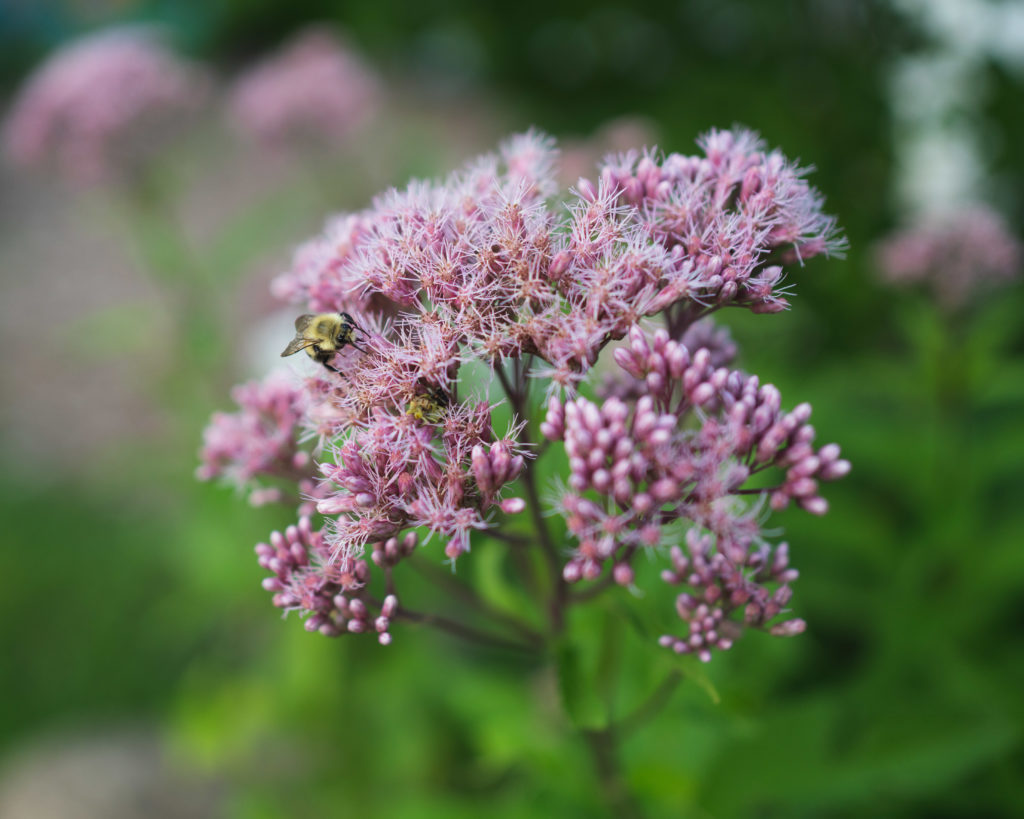
Bonus
Chelone glabra – White Turtlehead
White blooms are said to resemble a turtle’s head. Attractive to many nectar seeking species such as bumblebees, hummingbirds and butterflies. Enjoys moist to wet soils in full sun.
Height : 2-4 feet (60-120 cm) Spread : 1-2 feet (30-60 cm)
Blooming Period : August to September
Light : Full Sun to Part Shade
Water : Moist to Wet
Soil : Sand, Loam, Clay
Zone : 3-8
Native Ontario Habitat : Wetland edges, stream banks, moist meadows
Landscape Uses : Butterfly gardens, pollinator gardens, hummingbird gardens, wetland restoration, pond edges
